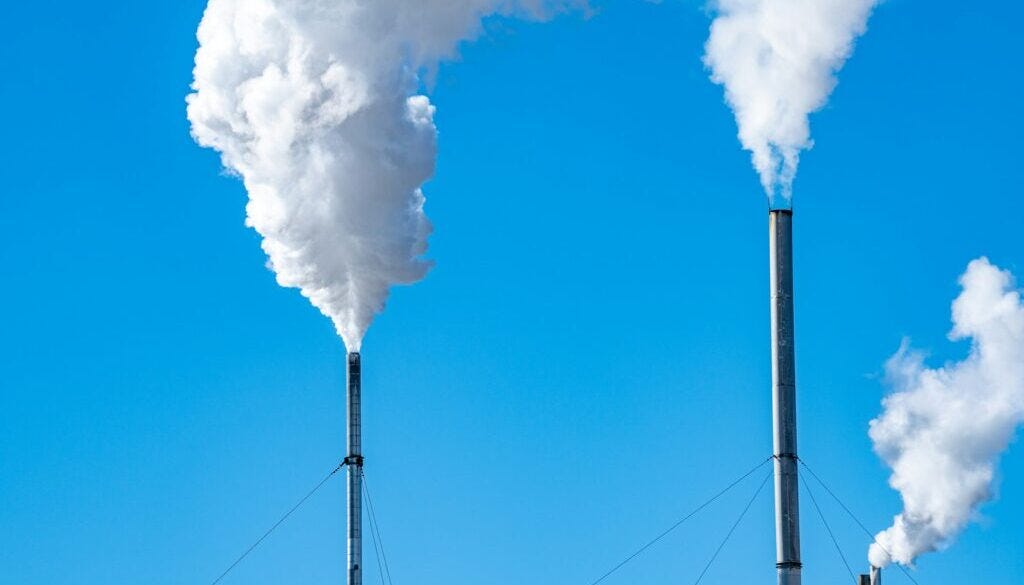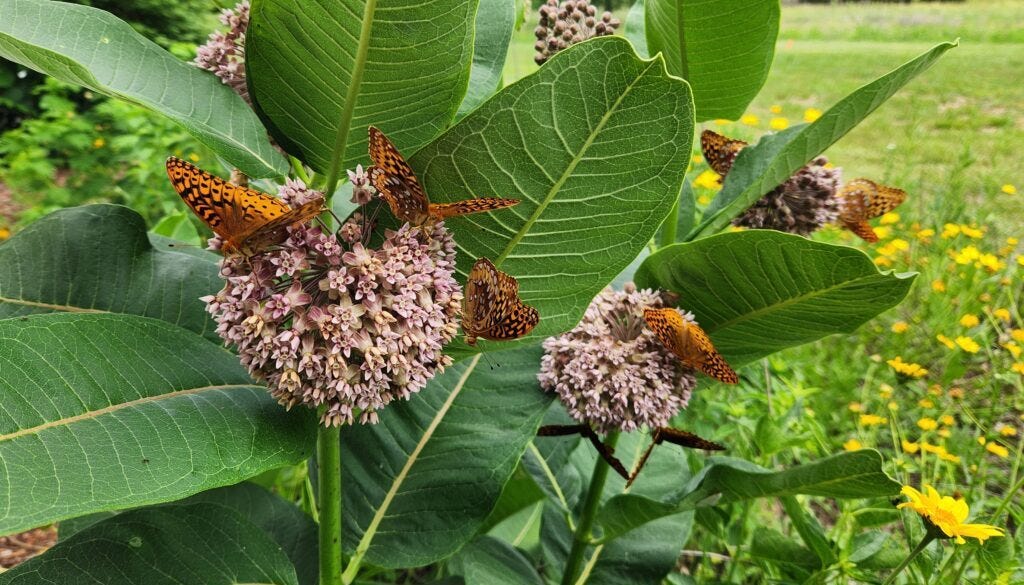Must-read recap: The New Lede's top stories over the last week
FDA moves to ban food dyes; air quality data; neonics in Nebraska; sealed PFAS documents; most endangered river; water injustice hotspots; Syngenta settlement; toxic mattresses; butterflies in peril.
FDA moves to ban petroleum-based food dyes
Federal health officials announced plans Tuesday to phase out synthetic food dyes made from petroleum, marking a significant shift in how the U.S. regulates chemical additives in food.
Secretary of Health and Human Services (HHS) Robert F. Kennedy Jr. and Food and Drug Administration (FDA) Commissioner Marty Makary, along with other Trump administration officials, announced a series of moves to rid the American food supply of the dyes, including revoking authorization for two food dyes (Citrus Red No. 2 and Orange B), working with industry to eliminate six other synthetic dyes by the end of next year and authorizing four new natural color additives in coming weeks.
The agencies will also work with the National Institutes of Health to research how food additives impact children. (Read the rest of the story.)
Over 50 million Americans lack access to federal air quality data, study reveals
More than half of US counties lack a single federally monitored station for keeping tabs on air quality, meaning more than 50 million Americans (about 15% of the population) live in “air quality monitoring deserts” that lack crucial data for protecting people from harmful pollutants, according to new research.
The findings come as environmental and public health advocates grow increasingly concerned about how recent Trump administration actions will impact air quality and the availability of data and resources for monitoring it.
The study, published April 21 in the journal Proceedings of the National Academy of Sciences, used September 2024 data from a US Environmental Protection Agency (EPA) directory to pinpoint gaps in air quality monitoring, finding that rural counties and those more heavily populated by minorities were less likely to have monitoring stations. (Read the rest of the story.)
Nebraska residents call for tighter insecticide regulations after contamination event
More than four years after a massive contamination event tied to pesticide-coated farm seeds rocked a rural Nebraska community, environmental and public health advocates are calling on state officials to remove regulatory exemptions for the coated seeds, and to monitor waterways for the pesticide pollutants.
Supporters of the action have launched a petition drive, and protested at the Nebraska state capitol last weekend as part of an observance of April 22 as Earth Day, and as part of national protests against actions by the Trump administration.
The action reflects persistent frustrations and fears among residents in the area of Mead, Nebraska, the site of a former ethanol plant that used discarded seeds coated with neonicotinoids (neonics) as feedstock and failed to properly dispose of the neonic-laden waste. The plant accumulated thousands of pounds of the waste onsite, failed to prevent it from leaking into waterways, and spread some on farm fields as a soil-conditioner. (Read the rest of the story.)
Groups move for disclosure of Chemours’ sealed PFAS documents
The chemical manufacturing company that has publicly touted its products, business strategies and chemistries in ad campaigns aimed at polishing its image will further harm North Carolinians if it is successful in keeping thousands of pages of documents sealed in court, environmental organizations argue. The Southern Environmental Law Center last week filed a court motion to intervene in a case brought against Chemours and its predecessor company DuPont, attorneys for which have asked the court to keep up to 21,000 pages of documents under seal.
The Southern Environmental Law Center recently filed a court motion to intervene in a case brought against Chemours and its predecessor company DuPont, attorneys for which have asked the court to keep up to 21,000 pages of documents under seal. (Read the rest of the story.)
Mississippi River named the most endangered of 2025
The Mississippi River ranks as the nation’s most endangered river as federal plans to cut flood relief programs meet with a rise in severe weather, a new report warns.
American Rivers, a nonprofit environmental advocacy organization, said the threats to the Mississippi River – which provides water for nearly 20 million people – come as communities along the lower river flooded from torrential rain in early April, and as Trump administration officials consider eliminating the Federal Emergency Management Agency (FEMA), which helps state and local governments respond to disasters.
The list calls attention to the threats rivers face and prioritizes those for which the public can influence policies that affect their well-being, said Mike Sertle, senior director for American Rivers’ Central Region. (Read the rest of the story.)
Study reveals US hotspots for poor water quality and “water injustice”
New research has identified hotspots in the US with concerning levels of water quality and poor access to clean drinking water, revealing that Mississippi, Pennsylvania, Arizona, and Washington had the most water quality violations across the board.
The paper, published April 15 in the journal Risk Analysis, also developed county-level scores across most of the country for unequal access to safe and clean drinking water, finding that eight of the 10 counties with the worst “water injustice” scores were in Mississippi, with the other two in Texas and South Dakota. Water injustice tends to disproportionately impact low-income households and people of color. (Read the rest of the story.)
Syngenta moving to settle thousands of lawsuits claiming paraquat causes Parkinson’s disease
Besieged by thousands of lawsuits alleging that its paraquat weedkiller causes Parkinson’s disease, Syngenta has entered into an agreement aimed at settling large swaths of those claims.
The company and lead counsel for thousands of plaintiffs have “entered into a signed Letter Agreement intended to resolve” the litigation, an April 14 court filing states.
The lawyers for the plaintiffs confirmed the settlement but declined to answer questions about the details. (Read the rest of the story.)
Unsafe sleeping? Mattresses may expose children to toxins as they sleep, studies find
While monsters under the bed may be just childhood fantasy, parents might have real reason to fear what’s lurking in their children’s mattresses.
These mattresses can contain a variety of toxic chemicals including flame retardants and substances called “plasticizers” that make materials softer and more flexible, exposing kids and babies as they sleep to harmful emissions linked to issues with cognitive function, asthma, cancer and other health problems, according to new peer-reviewed research.
In a study published April 15 in the Environmental Science & Technology Letters, scientists detected over two dozen phthalates, flame retardants, and UV-filter chemicals (which protect materials from sunlight) in 25 Canadian children’s bedrooms, with the highest levels in the air around the beds where the children slept. (Read the rest of the story.)
US butterfly population in peril, declined 22% in two decades
As coordinator of the Iowa Butterfly Monitoring Network, Nathan Brockman was not surprised at recent headlines showing butterfly population numbers across the country in steep decline.
From 2000 to 2020, butterfly populations fell by 22% across about 554 species, a group of 33 authors from nonprofits, universities, and state and federal agencies recently reported. Habitat loss, a warming climate and chemical use in agriculture are among the factors. (Read the rest of the story.)











